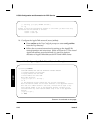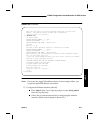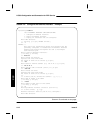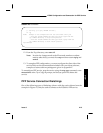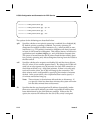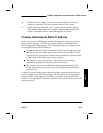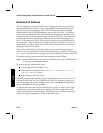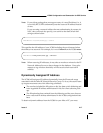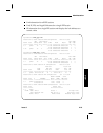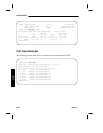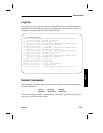
PPP
LCS60 Configuration and Connection for PPP Service
-u Identifies the user (either user name or numeric ID) for whom the IP
address is requested. This is not required when a NAC is used.
-C When connecting using IPX, the -C option is used to specify whether
CIPX header compression* is to be used. -Con (default) specifies that
header compression will be used; -Coff specifies it will not.
Privately Administered Static IP Address
In this case, the user’s IP address is locally administered by the user on his/her
client software package. For PPP users, this IP address is embedded in their
IPCP configuration request packet. The LCS60 grants the user’s request for the
proposed IP address if the IP address is:
A valid IP address allocated from within the IP network range associated
with the IP network security group name that he/she has called. The IP
network security group name matches the local address component of the
LCS60’s data switch dialstring mnemonic address.
Not already in use by another user. The LCS60 may have already
assigned the requested IP address to another IP session.
Not a match to any reserved IP address that has been allocated by the
LCS60 administrator (except for a reserved IP address set aside for that
user’s user id).
To obtain a specific (static) address that has not been reserved for the client, set
your IP address on the PPP client package. This IP address will be negotiated
with the LCS60. If that address is available, your session will acquire that IP
address. If the requested IP address is reserved or busy, then the connection will
not be successful.
* Refer to RFC 1553.
Issue 3 4-15






